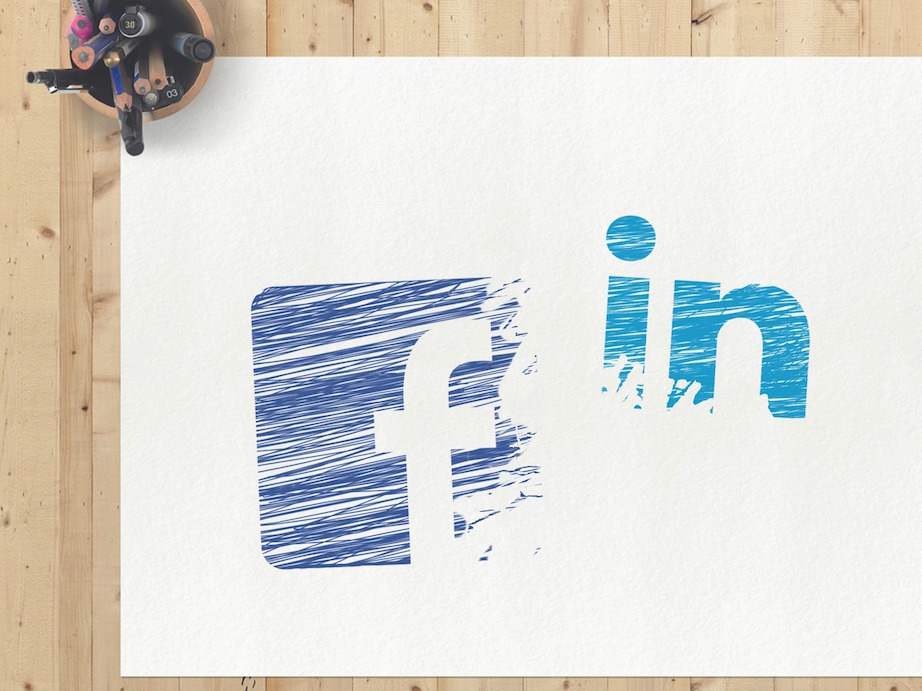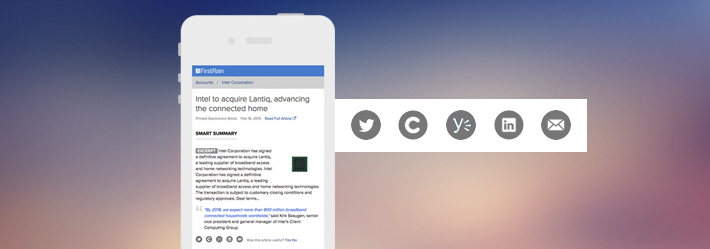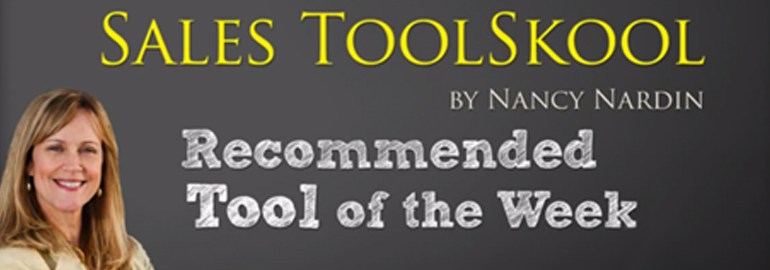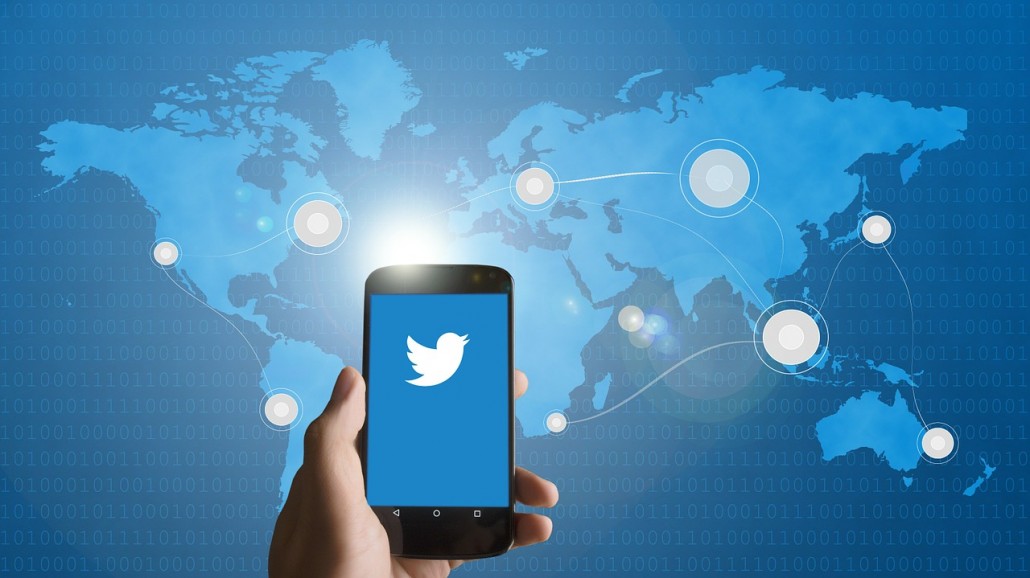
Each social network has its own persona. We have the style icon, all looks, in Instagram and the hotheaded, no-filter urbanite that is Twitter. Then, there’s the socialite, Facebook, and the professional, LinkedIn – both who seem to be undergoing respective identity crises.

This isn’t the first time Facebook has tested LinkedIn-esque features. Last year, Facebook tested out “Profile Tags” that showcased a user’s interests, skills, and personality. Sound familiar? Take a peek at your LinkedIn endorsements.

A confusion of what is “work related” is possibly to blame for the increasing clutter on our LinkedIn feeds. For example, the included quote was pulled from a lengthy LinkedIn post.
The quote was accompanied by a big, smiling, “selfie.” Though work and career are essential themes to the post, the emotional description and personal image reflect Facebook’s intimate reputation more than that of the professional networking psyche originally associated with LinkedIn.
The pseudo-work related post formula has spread like wildfire across LinkedIn. Always, a personal photograph follows the assertion. Another “selfie” shot I came across this morning was captioned, “Ready for my first interview!” I can’t image any interviewer not checking the LinkedIn profile of candidates before meeting.

Rather than these posts being overlooked, LinkedIn users can’t resist the bait. Each political post is accompanied by Tweet-worthy replies from every part of the political spectrum. Even posts without political themes are subject to these users.
There’s no confusion of these being unrelated to work (unless one’s industry is, in fact, politics) so what’s driving users to share these on LinkedIn?

Nowadays anyone can “publish an article” to LinkedIn’s “news” in the same style used by any unprofessional blogging platform including the micro-blogging network Tumblr, with its neo-new wave, post-punk persona. After publishing a blog an article, it will be conveniently placed into the view of their connections via LinkedIn’s “Recommended Reads” emails’ “Published by your network” section. If you play the game right, as outlined here by this highly-shared author, LinkedIn Editors will push your news to the featured #dailyrundowns. Though curated by the human hand, the Daily Rundown sometimes consolidates trends across all interests, creating one noisy summary. Take a look at the below headline on death.
In a world of information overload, the last thing we need is a noisy, one-stop shop. From retail to news to TV channels, our society is demanding filtered, specific access points to what we consume. If LinkedIn loses its sense of self, we lose a productive, professional networking tool and the relevant-information sharing possibilities it offers. On the flip side, if Facebook loses its carefree persona, I may have to limit the number of cat photos I post.
Still not sure the lines are being blurred? Check out this comment made on LinkedIn CEO Jeff Weiner’s recent update:

Finalizing your 2017 B2B Marketing strategy? Make sure you check in on what your B2C colleagues are doing too. In the annual “State of the Connected Customer” report for 2016 by Salesforce Research, surveyed marketers identified getting smart about personalization as a top requirement for meeting their marketing expectations in 2017.
Personalizing consumer messages has become the status quo for most B2C marketers. I have nearly a dozen emails sitting in my inbox, from this weekend alone, recommending cosmetics for my personal skin type and mobile apps for my personal habits. However, personalized messages aren’t just for B2C. Even for B2B, buyers increasingly voice that they want to be treated like humans, not numbers.
Forbes predicts that in 2017, B2B marketing focuses will include:
The two trends aren’t so separated. The answer to humanizing B2B messages with personalization can actually be found in those new data and analytic technologies. In the coming year, personalized experiences for business buyers will emanate from multiple channels including deployment of digital content, social interaction, and user communities.
The 2016 “State of Marketing” report by Salesforce Research shows over half of marketing leaders worldwide are set to increase spending on marketing tools and technology over the next couple years. The investments are driven directly by customer demand. For example,
Image: “State of the Connected Customer” Salesforce Research
For a tangible representation of this statistic, consider the possibilities of personalized, B2B marketing.
Targeted Messages and Target Markets
Your internal data reveals businesses are more likely to invest in your consulting services within a quarter of a new COO coming in. Using external data analysis of executive movements, you can deliver personalized messages to your target customers, automatically and effectively.
Engagement and Relationships
Your hospitality special events team is looking for opportunity indications around a prospect such as new industry conferences or changes in marketing spending. Events are automatically discovered, enabling your personalized messages to potential buyers that encourage your hospitality services over those of your competition.
With in-depth data and analytics becoming increasingly available, effective and personalized B2B marketing has become possible. It’s time to see your business buyers as more than just businesses.

We’ve heard of Hunters and Farmers. However, a recent webinar from Top Sales World, “Account Based Selling: Stop Selling & Start Guiding”, claims the Fisherman is the true MVP of selling. But who is the Fisherman?
An old, overlooked friend, the Fisherman is described by a 1990s article in relation to recruiting as a patient hirer with diverse requirements. The current seller definition follows the same tone. According to the Optis Group, the fishing salesperson is calm, realistic, and collaborative. For many, this sounds far from the aggressive Don Draper they think of. However, it seems increasingly likely that the Fisherman is the same person responsible for your top sales.
A survey was conducted on top salespeople in order to identify their core persona in terms of attributes that explain drive, motivations, and actions. I attended the survey’s accompanying webinar, “The Persona of Top Sales Professionals” by Velocify. Though this was intentionally not a personality test but rather a look into their perception of the world, for the purpose of testing my Fisherman hypotheses, I answered a short Myers Briggs test according to the survey’s top results and descriptions. Think of this as my Rosetta stone for comparing the Fisherman ideal to the current top sales performers’ persona.
The top answers by top salespeople indicate an ESTJ personality type. According to the Account Based Selling webinar, the Fisherman guides, not pushes, leads through the sales pipeline with support, advice, and appropriate interjection. Similar to Fishermen, ESTJs are described as those that provide “clear advice and guidance” while leading the way down difficult routes.
Dedicated planners, ESTJs value preparation and follow-through. This aligns nicely with the idea that knowledge and relevancy is key to Account Based Selling. Jonathan Farrington, host of the Account Based Selling webinar, proposes that to achieve relevancy, and therefore effective selling, knowledge must go beyond just product knowledge to encompass industry, sector, competitive, company, business, and self-knowledge. This concept carries over into the survey results with the group answering “knowledge is powerful” as essential to sales was the group found to have the highest quota attainment at 170%.
With solid comparisons found between Fishermen and the persona of current top salespeople, the metaphor may in fact be a useful tool for hirers of salespeople or current salespeople looking to adjust their own selling approach to modern consumers.
According to the webinars referenced:

Building solutions that meets today’s customer needs is core to our FirstRain mission. Over the last few months we have invested a lot of time with customers and prospects to really understand what today’s sales teams need as part of their sales acceleration strategy. Today we are pleased to announce our newest product update with FirstRain Personal Business Analytics™ for Sales 2.0 for salesforce.com. Starting today, FirstRain customers can download the newest version of FirstRain for salesforce.com from the salesforce AppExchange.
Transforming the way people market, sell and service through a customer-focused lens takes a deep understanding of the customer and the markets in which they operate. FirstRain gives sales and marketing teams the insights they need to understand emerging business challenges and opportunities, driving actions and strategic decisions in order to grow revenue. FirstRain ranks top accounts by the quality of triggers that are dynamically discovered based on a user’s role, and the products and services they sell.
Using an adaptive business graph that delivers powerful categorization and precision, and in-the-moment, context-aware personalization, FirstRain can now coach sales teams by alerting them of “Deal Breakers” and “Accelerators,” which include real-time triggered events on potential risks in active Salesforce.com sales opportunities or real-world events that will help accelerate sales discussions.
Welcome to a new way to know “Who to Call” and what to say!
You can read the full press release here, or sign-up to see for yourself here.

A new post from Rachel Clapp Miller at Force Management posted on HubSpot titled ‘How to Get Your Sales Team to Show Value in Social Media‘ is a good quick read as you think about enabling your own sales teams with social selling skills.
According to the post, a survey from IDC shows 75% percent of B2B buyers use social media to make purchasing decisions. And that number jumps to 84% when you factor in C-level and/or VP Executives. It’s a no brainer, making your sales and customer facing teams social is important and Rachel’s 5 tips are spot on:
I love this combination of technology, enablement and setting formal goals for your teams and have seen it work well for sales teams of all different sizes. Here is how we enable our own FirstRain team to become social sellers:
Using our own platform, FirstRain provides each one of our customer facing rep with prompts, covering their customers, target markets and industry trends. With one click access from all our apps, they can quick share externally to Twitter and LinkedIn and to internal social networks (we use Chatter, but enable our customers on Chatter, Yammer and IBM Connections).
In addition, our marketing team on a weekly basis picks out 10 pieces of content for our field team to quickly share on Twitter and LinkedIn. Our team creates these weekly emails, using targeted FirstRain views we have created and selecting content that we may see our own network sharing. Topics range from Sales Enablement trends, Platform engagement, Internet of Things and things like security concerns that our customers care about. Some are directly addressed by the products we provide, but some are top of mind topics that everyone should care about. The format is as easy as our product app sharing, one click to twitter or Linkedin- leading to many thanks and sharing from our teams!

This week’s Smart Selling Tools newsletter, recommends FirstRain as its “Tool of the Week” calling FirstRain “a personal sales assistant for each rep prompting customer engagement that’s personalized to how and what you sell”. Smart Selling Tools is a resource site and newsletter for B2B buyers to discover Sales and Marketing software that helps companies grow revenue.
You can read the newsletter to see why Nancy Nardin, a nationally recognized thought leader on sales and marketing productivity tools, chose FirstRain to be one of the year’s top 40 sales tools of 2014 as well as this week’s recommended tool and then head over to the Smart Selling Yahoo video channel to listen to Nancy explain why in her Tool Skool video.

“Just like having a website in the 1990s, buyers are now judging the legitimacy of an organization based on their presence (or lack thereof) on social media.”
Rachel Clapp Miller over on the Force Management blog recently wrote a great piece on how to incorporate social media into your sales process. According to the research she quotes, social is proven to helps sales organizations drive pipeline by
(1) engaging with buyers earlier in the sales cycle,
(2) maintaining relationships with current customers and
(3) demonstrating valuable market insight.
Whenever you start using a new social media site, it prompts you to change your avatar, the image associated with the content you create/post. Your avatar basically represents who you are and an increasing amount of sales people are starting to use their professional ‘headshots’ across all their social business networks. This allows them to create a recognizable brand for themselves as social sellers for when they finally meet face to face with the customer. [Have you ever experienced the delight of meeting someone that you have followed and engaged with on a social network? I have many times, and it is a great feeling!]
Many companies are also starting to dictate that their employees join and engage with their customers on social networks – primarily Twitter and LinkedIn. Recently I saw a huge influx of people joining Twitter from a specific company. I found them because they were all retweeting the same corporate tweets I was tracking. However, I also noticed that many of them were eggheads. An egghead is a twitter user that doesn’t change their profile pic. As an ‘egghead’ you are surely going to be ignored–some might even think that you are a spam bot of some sort. So I asked someone that worked there about what was going on. It turns out that their CEO had announced at their annual meeting that everyone had to be on social. So the eggheads got on social, and many of them still haven’t hatched.
Remember the old mantra, people buy from people? Your buyers are not going to engage with your eggheads. However, hatching an egghead into a social seller who will provide value to their network doesn’t happen overnight. You have to put together a social media plan that will help your sellers be successful on social. This should include tools that will help them quickly share content that is not only promotional for your own company and products, but will also provide insights into subject matters that your customers care about.
With that being said, I think it is time for me to retire my very own avatar. A couple of years ago I wrote an ebook that was beautifully illustrated. It included a hand drawn cartoon of me. Since then, I have used that picture as my Twitter avatar. My network knows me as such and I am concerned that by switching I might be masking myself with … well … a real picture of myself! But that’s ok- the aim is to provide value and engagement to my old friends and my new ones as well, and a fresh look could help do the trick..So follow me to see the “new” @danielabarbosa

Navigating social media without analytics is like crossing the ocean without stars.
No self-respecting ancient mariner, or night-migrating bird for that matter, would try to cross from Knossos to Delos without use of the stars. The ocean is too large, and full, and dark.
But sales people are trying to follow their B2B customers on Twitter without the stars. They load up users and keywords into excellent B2C support apps like Hootsuite or Radian6, but still miss their destination because they can’t navigate the business developments by following people. To understand how your customer’s business, and so your target, is changing, you need to be navigating through all of Twitter and extracting out the B2B business trends buffeting your prospect.
That takes analytics. Analytics that process every tweet and figure out its meaning, in real time. Analytics that figure out whether it is relevant to you. Does it match your personal interests, does it have meaning to your business and your strategy, whether or not the keywords you put in are matched?
That’s what we’re doing at FirstRain; it’s all very personal. We analyze Twitter the way a Minoan navigator would study the stars 10,000 years ago. We’re finding you the path through Twitter’s ocean to get to your ultimate destination: revenue growth.

How’s your current sales model treating you? Is the sales funnel failing to produce legitimate results? It could be because you haven’t updated it for the 21st century. In this digital landscape, more companies are generating their leads from social media, and, in some cases, turning the traditional sales funnel on its head. Read on to learn how to be more dynamic in the social realm.
Learn From Larger Brands
A recent report from Simply Measured found that the most successful brands worldwide tend to tweet frequently. While it’s not surprising that these large brands have a higher following than smaller businesses, they also tend to be far more engaged with social media than peers in the small-business sector. Of the Interbrand Top 100 Brands, 98 percent tweeted at least once a day during the fourth quarter of 2013, while more than half of smaller companies didn’t tweet every day. There is a relationship between engagement and frequency of posts, and every business can benefit from being more engaged.
Engage Your Customers for Maximum Returns
The most successful companies know that when you engage with customers, they will do a lot of your work for you. According to ClickZ, re-thinking the funnel to include social media can revolutionize the sales cycle. Getting clients to advocate for you is a great way to gain new business; there’s no better place for them to share their experiences than through social networks like Facebook and Twitter. You can even use these platforms to gauge new marketing methods. Try throwing out some questions to your captive audience. How did they find your company in the first place? If they found you through word of mouth, you should be focusing your efforts on customer retention.
Identifying Sales Opportunities with Social Platforms
Platforms like LinkedIn, Twitter and Facebook can enhance the sales funnel in other ways as well. For instance, social media is optimal for lead generation. According to Jeff Kalter on Business 2 Community, a website alone is not enough to generate interest. Some enterprises are disappointed in the lack of leads they are getting from their Web presence, but this can usually be improved dramatically by strategic use of social networking. Promote your blog entries on Twitter and Facebook. If you’re lucky, your followers may share your media as well. Just make sure your presence isn’t entirely geared toward self-promotion. Share information posted by other people, and it’s more likely others will share your original content.
Optimize Your Funnel for Social Media Lead Generation
First, you have to choose one or two channels to work with. Depending on the size of your company, you should probably keep it to just one or two, at least in the beginning. Doing some customer research can help determine which platforms to use. Media companies tend to excel on Twitter, while more visually-oriented brands can do well on Pinterest. Are you in the business-to-business sphere? You may want to start with LinkedIn.
If you already have a Facebook or Twitter page, take a look at your platform from the customer’s point of view. In an article for Social Media Examiner, Nichole Kelly suggests that you make it as easy as possible for potential buyers to make a conversion. For instance, when people do find you on Facebook or LinkedIn, do they have to search around the platform to find a link to your site? Rather than making them jump around, have a clear call to action, you will create more leads.
Segment Your Leads
Kelly suggests that leads found through social media should be nurtured differently. Social media users may enter the sales funnel earlier in the buying process than other leads, so you have to be careful with how you treat them. Don’t immediately ply them with information they won’t need. Create a segment on your email marketing campaign list for leads found on social media. Send them useful information that will help guide them in the eventual decision-making process.

Getting exhausted by tired old methods for finding sales leads and connecting with customers? Twitter is a fresh alternative to waiting for email registrations, and it’s a great way to provide better service to your current clients. The best sales resource is knowing your customers. In this regard, social media can be a great complement to customer intelligence analytics. Twitter’s features make it a good choice for sales reps who want to get plugged into their consumer market.
Find prospects
The best way to maximize the service is to get a platform like TweetDeck to help you organize the people you follow.
First, you’ll need to identify leads. It may take a while to build a following, but it will be worth it in the long run. Start by using the search function to look for words buyers of your product might use, says Anna Bratton for Salesforce. Follow the people who fit your customer profile.
Another good idea is to check out your competitor’s Twitter feed. If you’re lucky, they may have already done the legwork for you. If they’re not on Twitter yet, well, that’s good for you too.
Once you’ve generated a list of people to follow, organize them into lists. For instance, your competitors can have their own category. These indexes can also be used to organize potential clients by where they are in the sales cycle, suggests Bryan Kramer on the Salesforce blog. Twitter is a great tool for keeping prospects on your radar.
Look for signals
Use the search function on Twitter to identify businesses that are looking to buy a service you offer. Twitter benefits both buyers and sellers by providing a large community to answer questions. Look for users who are asking for recommendations. They will be particularly pleased to get a quick answer from you. Search for terms like “anyone recommend” or “any advice on,” says Bratton.
Keep on eye on various signals. Once again, list functions work perfectly for this. On TweetDeck you can create a list that compiles any tweet containing words you’ve identified. Look for tweets that mention name of your company, or a keyword that best represents what you do. Having a list devoted to competitors is never a bad idea. If a user mentions a competitor, specifically a negative experience with one, you have an opening to jump in and suggest your services instead.
Optimize the experience
No one likes a self-serving Twitter feed. The point of social media is to generate conversation and engagement, not to promote your own company ad nauseam.
This platform is ideal for companies seeking a thought leadership role. This means that most of what you tweet shouldn’t be directly about you at all. On Marketo’s blog, Heidi Bullock provides a useful guideline, called the 4-1-1 rule. For every tweet your company makes to promote itself, you should retweet someone else (but don’t cheat by retweeting another user’s complimentary words about your services). In addition, you should share four pieces of content from other sources. Provide insightful articles with digestible headlines that are under 140 characters. Actually, the less characters you use, the easier it will be for other to retweet you with your words intact.
Promoted posts are another strategy to consider, although this service may not even be necessary. You can use promoted tweets to target specific users. Since this is a slightly more invasive strategy than targeting users who seem specifically interested in buying, it may be wise to test the waters before rolling these out on a wide scale. Wait until there’s a big industry event underway and provide timely and engaging content like a white paper or e-book for those who may be associated with the occasion.
